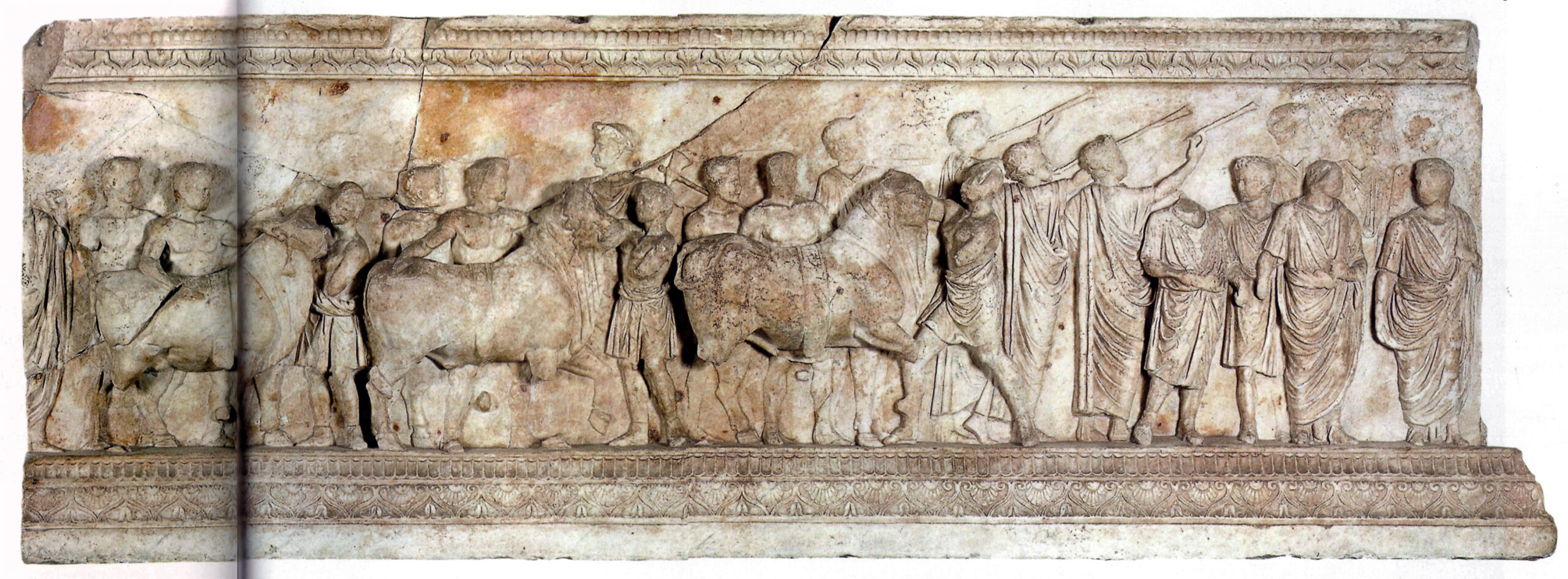Eumenes II’s pompe in Sardis recognised by Delphi
| TITLE: |
| Eumenes II’s pompe in Sardis recognised by Delphi |
| DATE: |
| c. 166 BC |
| TEXT: |
| OGIS 305 = FD 3.3.241 = FD 3.3.242 (A) (B) |
| EDITIONS/TRANSLATIONS: |
| OGIS 305 = FD 3.3.241 = FD 3.3.242 |
| KEYWORDS: |
| Word used to mean procession: |
| Cf. Bömmer 1952, p. 1967: “eine Pompe wird nicht ausdrücklich erwähnt, ist aber nach dem Charakter des Festes als sicher anzunehmen” |
| Word used to mean the cult images: |
| Gods or other entities named: |
| Athena (l. A.7) Athena Nikephoros (l. B.8) |
| Description of the cult images: |
| Procession’s route: |
| Frequency with which the procession takes place: |
| Every four years with contests in music and gymnastics (l. A.8, κατὰ π[ε]ν[ταε]τ[ίαν] μουσικόν [τ]ε καὶ γυμνικόν) |
| Performers: |
| References to the public attending the procession: |
| Rites related to the procession: |
A. the Sardian envoys to Delphi urged the city to accept their sacrifices, festival, games, and allegedly the pompe, as the people of Sardis propose to perform sacrifices and hold games in honour of Athena and king Eumenes II, entitled Panathenaia and Eumeneia, with a prize of crowns equivalent to the Pythian games (l. A.6-8, πα[ρε]κάλ[ε]ον τὰν πόλιν ἀπο[δέξα]σθαι τὰς θυσίας καὶ τὰν πανάγυ[ριν καὶ] [τοὺς ἀγῶνας] ο[ὓ]ς προκ[εχ]εί[ρι]σ[ται] συντελ[εῖ]ν ὁ [δᾶμο]ς ὁ [Σαρδι]ανῶν [τᾶι τ]ε [Ἀθάναι] καὶ βασιλεῖ Εὐμένει τῶι Ε[ὐερ][γέτηι, ὡς ἔγραψ]εν τᾶι πόλει αὐτός, στεφανίτας ἰσοπυθίους) B. the Sardian envoys to Delphi urged the city to accept a horse-racing contest with status equal to the Olympic games, which the people of Sardis voted to add to the games that it performed for Athena Nikephoros and king Eumenes II (l. B.6-9, ὃν ὁ δᾶμος ὁ Σαρδιανῶν πο][τι]εψαφισμένος ἐστὶ ἱππικὸν [ἀγῶνα ἰσολύμπιον τοῖς] [ἀγ]ώνοις οἷς συντελεῖ τᾶι τε [Νικαφόρωι Ἀθάναι καὶ βασιλεῖ] [Εὐμ]ένει, ἀποδέξηται ἁ πόλις |
| Allusions to conduct or forms of reverence: |
| Other remarkable elements: |
| Even though Eumenes II lost the favour of the Romans after the Third Macedonian War, he continued to be treated with great respect by other Greek states such as Sardis, in the words of Gruen (1984, p. 197): “there was some genuine gratitude paid for tangible benefits: the Attalids were saluted as patrons and protectors”. This inscription may be a celebration of a military victory of Eumenes II against the Galatians (Gera 1998, p. 200 n.72), in fact, it may be interpretet as “a confirmation (enthusiastically exploited by Eumenes and his successor Attalus II) of the Attalids’ self-appointed role as the protectors and saviours of Hellenic civilisation against the barbarian” (Thonemann 2011, p. 174). In general, with Kloppenborg (2020, p. 377), “cultic associations for the Attalids have been attested througout western Asia Minor”). |
| BIBLIOGRAPHY: |
| BÖMMER(1952), RE: s.v. Pompa. Herrscher, Vol. XXI.2, p. 1967, n.289-293 GERA, D. (1998): Judaea and Mediterranean Politics: 219 to 161 B.C.E., Brill, Leiden, p. 200 n.72 GRUEN, E. S. (1984): The Hellenistic world and the coming of Rome, vol.1, University of California Press, Berkeley, pp. 197-198 KLOPPEBORG, J. S. (2020): Greco-Roman associations: texts, translations, and commentary. Ptolemaic and Early Roman Egypt, De Gruyter, Berlin/Boston, p. 377 THONEMANN, P. (2011): The Meander Valley. A historical geography from antiquity to Byzantium, Cambdrige University Press, Cambridge, p. 174 |
